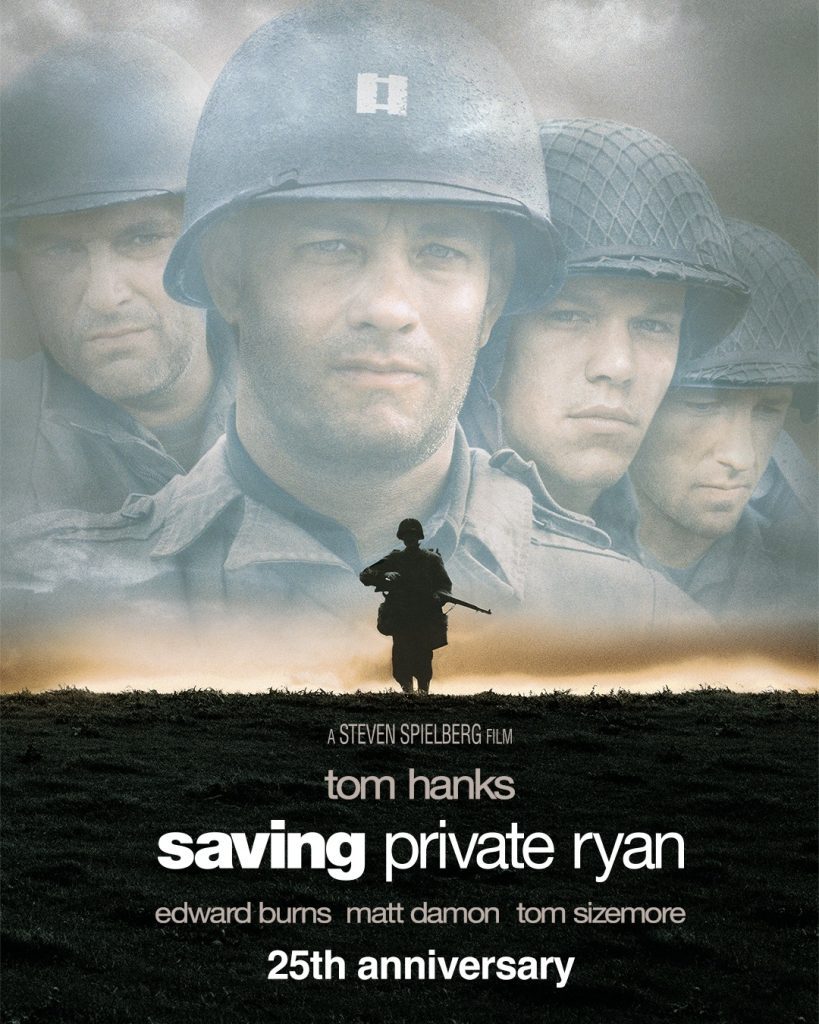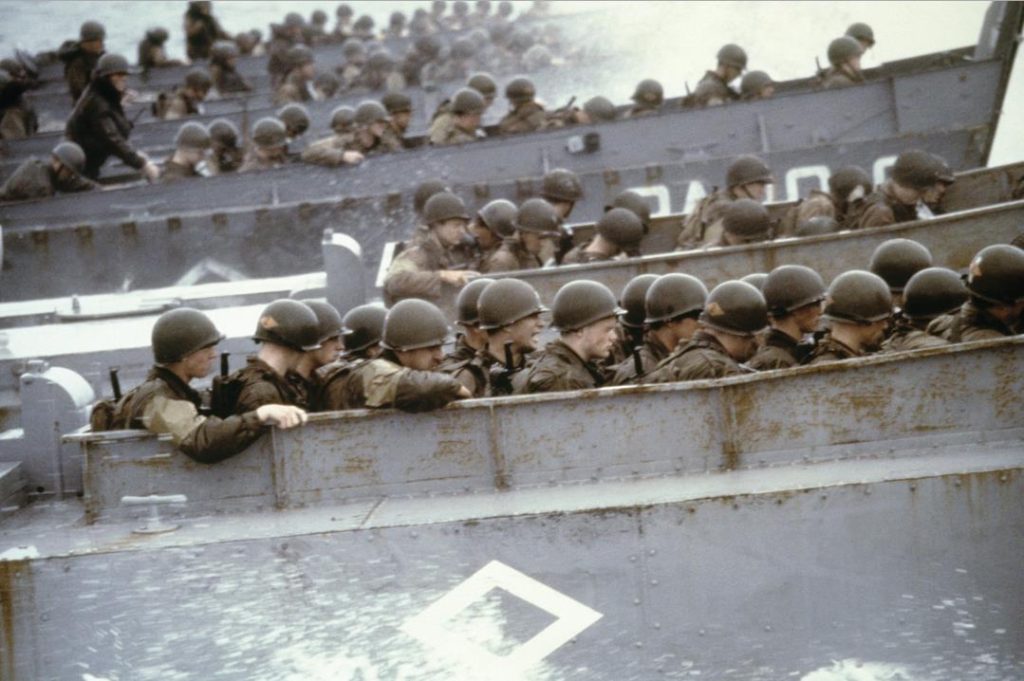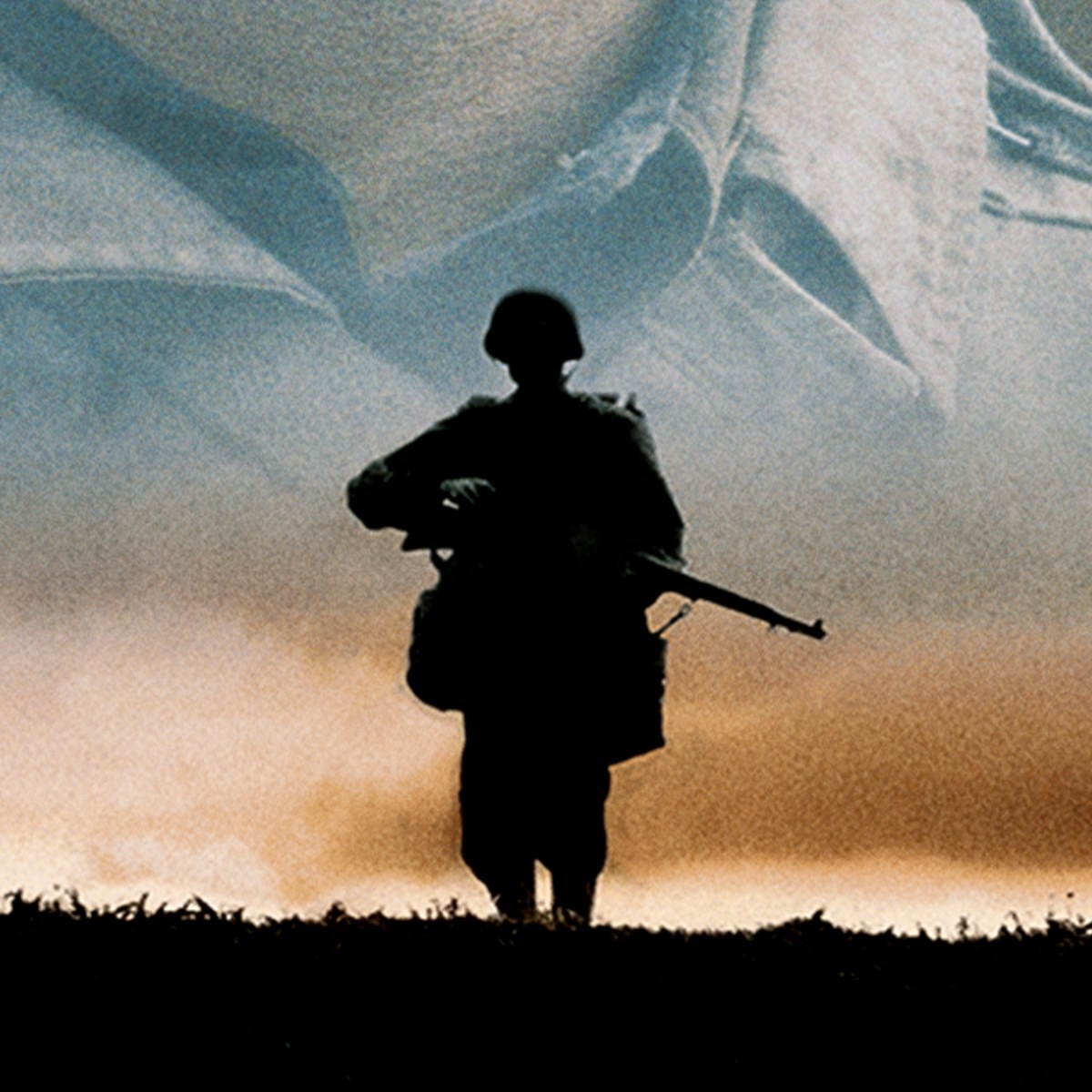Introduction:

“Saving Private Ryan,” directed by Steven Spielberg, stands as a cinematic masterpiece that not only redefined the war film genre but also left an indelible mark on the hearts of audiences worldwide. Released in 1998, the film is a visceral and emotionally charged portrayal of the harrowing experiences of soldiers during World War II. In this review blog, we’ll delve into the film’s narrative brilliance, its impactful cinematography, and explore how “Saving Private Ryan” skillfully evokes a range of emotions.
Narrative Brilliance:
At the core of “Saving Private Ryan” is a compelling and emotionally charged narrative. The film opens with the intense and unforgettable depiction of the Omaha Beach landing during the Normandy invasion. The visceral realism in this sequence, crafted through Spielberg’s masterful direction and Janusz Kamiński’s cinematography, immediately immerses the audience in the chaos and brutality of war. This gripping opening sets the tone for the rest of the film, as Captain John Miller (Tom Hanks) is assigned the daunting task of finding and bringing home Private James Ryan (Matt Damon), the last surviving brother of four servicemen.

The journey to locate Private Ryan becomes a poignant exploration of duty, sacrifice, and the human cost of war. The film skillfully balances moments of intense combat with quieter, reflective scenes that delve into the personal histories of the characters. The camaraderie among the members of Miller’s squad, each with their own background and aspirations, adds depth to the storytelling and enhances the emotional impact of the narrative.
Cinematic Excellence:
“Saving Private Ryan” is not only a narrative triumph but also a showcase of cinematic excellence. Steven Spielberg’s direction, coupled with Janusz Kamiński’s cinematography, captures the brutality and beauty of war with unparalleled realism. The decision to use handheld cameras during the battle scenes imparts a documentary-like feel, immersing the audience in the chaos and confusion of combat. The cinematography doesn’t shy away from the gruesome realities of war, delivering a stark and unflinching portrayal of the human cost.

The sound design, particularly in the opening sequence, contributes significantly to the immersive experience. The deafening roar of gunfire, the explosions, and the cries of soldiers create an atmosphere that is as jarring as it is authentic. The visual and auditory elements come together to create a sensory experience that leaves an indelible impression on the viewer.
Emotional Impact:
What sets “Saving Private Ryan” apart is its ability to evoke a wide range of emotions. The film doesn’t rely solely on the visceral nature of its combat scenes but also delves into the personal stories of the characters, making their sacrifices and struggles resonate on a deeply emotional level.

The theme of the film revolves around the profound question of whether the life of one soldier is worth the lives sacrificed to save him. As Captain Miller’s squad faces increasing challenges on their mission, the weight of this moral dilemma becomes palpable. The emotional core of the film is heightened by Tom Hanks’s nuanced performance as Captain Miller, who embodies the internal conflict and moral burden of leadership.
The film’s emotional impact is further amplified by the stellar ensemble cast, including standout performances by Matt Damon, Tom Sizemore, Edward Burns, and others. Each character, though introduced briefly, leaves an impression, making the audience invested in their fates. The camaraderie and bonds formed among the soldiers add a layer of authenticity to the narrative, making the eventual losses all the more poignant.
How to Feel “Saving Private Ryan”:
To fully appreciate and feel the impact of “Saving Private Ryan,” it’s essential to approach the film with an open mind and a willingness to confront the harsh realities of war. Be prepared for an immersive experience that doesn’t shy away from the brutality and chaos of combat. Allow yourself to connect with the characters on a personal level, understanding their individual stories and the sacrifices they make for a greater cause.

As you watch, pay attention to the details—the expressions on the soldiers’ faces, the sounds of battle, and the quiet moments of reflection. Let the film’s emotional core resonate with you, prompting introspection on the themes of duty, sacrifice, and the human cost of war. Ultimately, “Saving Private Ryan” is an invitation to engage with the profound and complex emotions that define the human experience in the face of adversity.
Conclusion:
“Saving Private Ryan” is more than a war film; it’s a powerful exploration of the human condition in the crucible of conflict. With its narrative brilliance, cinematic excellence, and emotional depth, the film stands as a testament to the artistry of Steven Spielberg and the entire creative team. To watch “Saving Private Ryan” is to embark on an emotional journey that leaves an enduring impact, reminding us of the sacrifices made by those who served and the profound cost of preserving freedom.



